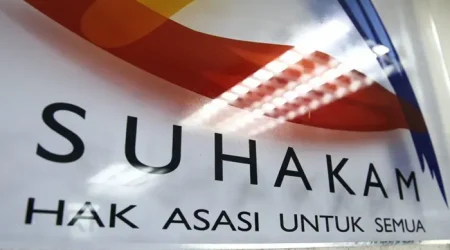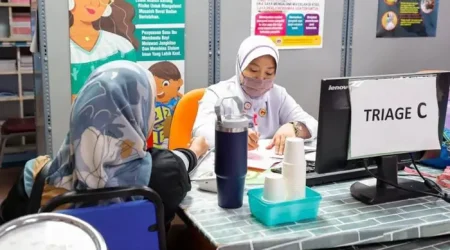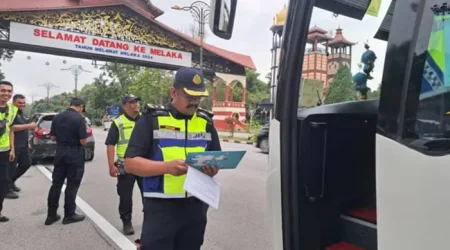Smooth clearance for cars at Singapore land checkpoints as VEP scheme for entering Malaysia kicks in
SINGAPORE (The Straits Times/ANN): Traffic at the Woodlands Causeway and Tuas Second Link remained clear on Oct 1 after the Vehicle Entry Permit (VEP) scheme for foreign-registered vehicles to enter Malaysia kicked in.
However, queues at the VEP offices in Woodlands and in Johor Bahru showed no signs of easing.
From Oct 1, motorists entering Malaysia must have installed and activated on their vehicles a VEP radio frequency identification (RFID) tag linked to a Touch ‘n Go eWallet. Those without a tag can still enter the country, but will receive a reminder.
Johor’s Road Transport Department said on Facebook on Oct 1 that it had issued reminders at the Malaysian Customs, Immigration and Quarantine (CIQ) complex to Singaporean vehicle owners who had not completed their VEP registration.
The department had announced on Sept 27 that it would do so and carry out VEP enforcement “in phases”, amid complaints in Singapore of delays and snags in the application process.
Mr Zaini Yatiman, who entered JB at around 9am without a VEP tag, said he did not receive any warnings at the Malaysian CIQ complex when he was returning to Singapore at around 4pm.
“I also did not see any warnings flashed at the immigration counter when I entered CIQ,” added the 61-year-old engineer.
At noon on Oct 1, checkpoint monitoring app Beat The Jam showed that vehicles heading into Johor via the Causeway needed about 17 to 26 minutes to clear the checkpoint, compared with 18 to 28 minutes an hour before.
At the Second Link, motorists needed an estimated 13 to 22 minutes to clear the checkpoint from 8am to 10am.
From 11am to noon, this dropped to about 12 to 19 minutes. The wait time had peaked earlier at about 7.30am with an estimated clearing time of 18 to 28 minutes.
The expected wait times at both checkpoints were lower than the noon peaks seen a week ago.
Data from the same day a week ago showed clearing times peaking at more than 60 minutes near noon at the Causeway checkpoint, with a smaller peak of nearly 40 minutes near 7pm.
For the Second Link, last week’s data showed a peak of about 40 minutes near noon, and another of more than 50 minutes just before 7pm.
Malaysian daily The Star reported that a Home Ministry official at the CIQ complex observed a drop of about 20 per cent in the number of cars entering Johor from Singapore on Oct 1, but added that it was too early to say if it was because of the VEP scheme.
When The Straits Times arrived at the CIQ complex across the Causeway at 8.58am, VEP registration signs had been put up and made visible to vehicles entering the checkpoint booths.
At one booth, the immigration officer checking passports asked for a VEP tag. The rental car used by ST did not have a VEP tag, so a VEP confirmation slip was shown instead.
The officer then asked the reporters to speak over the intercom to another officer, who inquired if the car was registered in Singapore or Malaysia, and whether the checkpoint toll had been paid. ST reporters were granted immigration clearance to enter Malaysia at 9.03am.
Limited queue numbers issued per day
At the VEP centre in JB’s Danga Bay, more than 50 people were seen queueing at about 10.30am, with the group split into two lines.
One queue was for inquiries, including about VEP applications and deregistration of current VEPs, and complaints. Those in that queue said they had waited between two and three hours for their turn.
Four employees were seen handling inquiries, with about two others helping motorists affix the VEP RFID to their vehicles.
The other queue was for VEP tag collection. Those in that line said they had waited about an hour for checks to see if their vehicle windscreens were suitable for the RFID tag.
They were then told to wait another hour for the tag, which would be affixed to their windscreens with the help of staff at the centre.
Some who tried to join the inquiry queue were told to return after 2pm. The issuing of queue numbers for both queues stopped at about 10.15am, said several motorists.
A VEP centre employee said between 200 and 250 queue numbers will be issued daily – split between a session before lunch and one after 2pm.
“We don’t want it to be too crowded,” he said.
Mr Rosman Haris, a tour coach and bus driver, collected his tag at about 10am on Oct 1.
The 50-year-old said he was due to collect the RFID tag on Dec 22, but went to the VEP centre on Sept 30 to reschedule his appointment because he was worried he would be issued warnings when VEP enforcement kicked in.
“When I came yesterday, they just told me to ignore the appointment date and come in when the VEP centres are open and take a queue number to collect the RFID tag,” he said.
Mr Rosman spent the night in JB in a hotel room so he could arrive at the centre early the next day. He said he began queueing at about 7am on Oct 1.
“The process was fairly smooth, but I understand there may be confusion,” he said. “I was surprised myself when I asked the staff if I could push forward my collection and they said I could just come.”
Private-hire driver Anuwar Badsha, 62, said he queued for a VEP tag from 8am to 11am, only to be later told by the VEP centre staff that private-hire drivers are required to only show a VEP confirmation slip, and do not need to have VEP tags fitted on their vehicles.
An employee at a Touch ‘n Go help counter outside the VEP centre said one of the main problems faced by Singaporean motorists was linking the VEP with their Touch ‘n Go eWallets, which are used to pay tolls and for other products and services in Malaysia.
She said about 80 per cent had issues due to a mismatch of personal details used to apply for each service, and cited the example of Singaporean motorists who used their identity card numbers to verify the Touch ‘n Go accounts, but used their passport numbers for the VEP.
In such cases, the scanners would fail to detect the VEP-RFID when transactions like toll payments are required.
For those planning to drive to Malaysia, here is what they need to look out for.
Renewable every five years, the VEP RFID tag allows the Malaysian authorities to identify a foreign-registered vehicle on the country’s roads.
It can be used to pay toll fees on Malaysian highways, as well as the RM20 (S$6) road charge levied on foreign vehicles when they enter Malaysia.
Announced in 2017, the VEP scheme is intended to determine the number of foreign vehicles entering Malaysia, and to prevent car theft and deter car-cloning syndicates. It will also allow the Malaysian authorities to track a vehicle’s traffic offences and outstanding summonses, which must be settled before exiting the country.
The VEP application process has been dogged by complaints, such as applicants not receiving confirmation e-mails even after waiting for a month, and long queues and insufficient manpower to handle demand at VEP centres in Singapore and Johor.
Additional reporting by Matilda Aquila Chia. – The Straits Times/ANN
















Leave a Reply